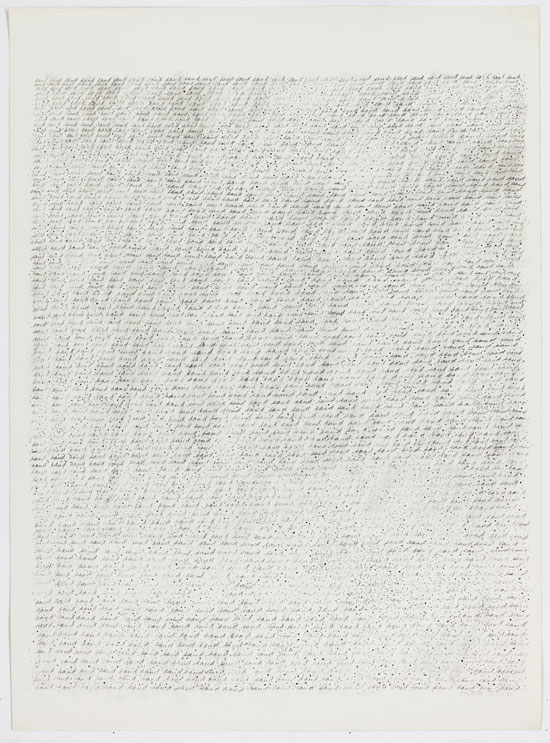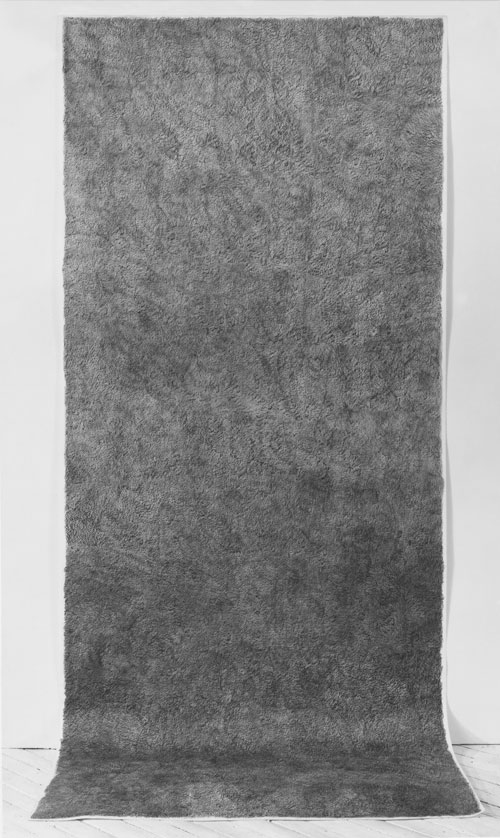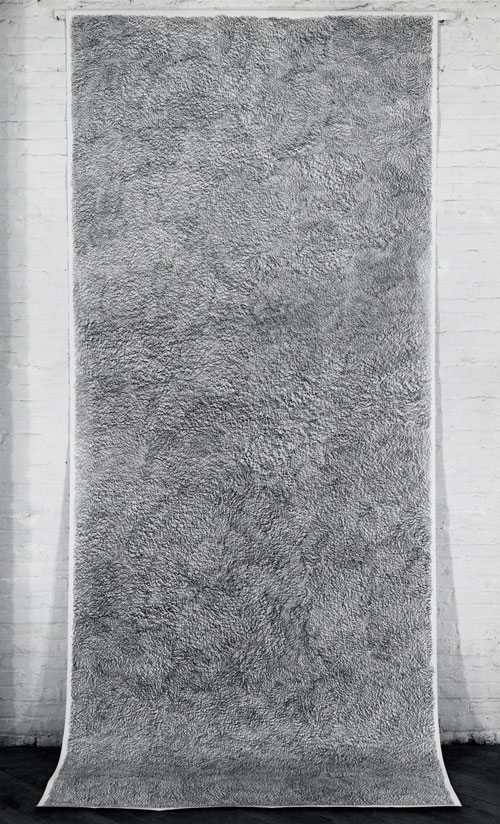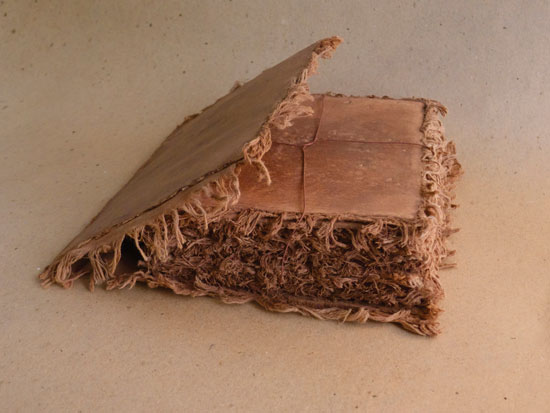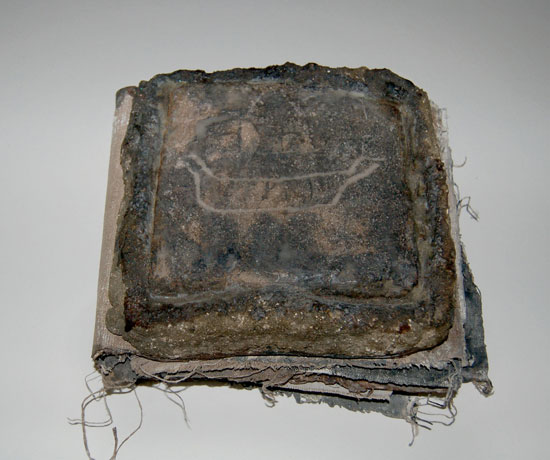In a contemporary art field overgrown with conceptual art that is slick, gimmicky, sensationalist, and too-smart-for-its-own-good, there are still opportunities to encounter work informed by ideas that has soul, substance, and is aesthetically appealing and intriguing.
Michelle Stuart’s survey exhibition “Drawn from Nature,” at the Parrish Art Museum through October 27, 2013 provides just that occasion to commune with art that does not require an instruction manual, even as it subtly transmits the artist’s deep knowledge on varied subjects and practices, including anthropology, archaeology, history, literature, cartography, botany, photography and, not least of all, drawing.
Michelle Stuart can be perceived as a scientist, gathering and organizing knowledge on nature and the universe. At times she employs language, as in Sand and Stone (both 1969-70); at times she uses recognizable images, as in photographic grids like Time/Memory/Relocated (1977-2011) and Ring of Fire (2008-09/2010).
.
.
More often, and most successfully, she has utilized nature to re-present itself directly, not necessarily through a filter of language or image. Beginning in the ’60s, she worked with boxes of earth, into the ’70s and ’80s with earth and rock rubbed onto a support, mapping and imitating the ground from chosen sites. Through the ’90s, she drew on nature by collecting and arranging seeds that bleed into and transform their paper supports; in the 2000s, she started including collected materials such as stones, seeds, and other specimens in installations.
Just as Stuart has continually extended the boundaries of drawing, from early on she expanded the concept and perception of landscape. Moon, from 1969, is drawn from photographs taken at the lunar landing that year (with Stuart drawing on her background as a cartographic draughtsman).
The precise and delicately rendered pencil lines mark out a detail of an expanse of ground that we could hardly imagine with such specificity were it not for the possibility of space travel and photography. Stuart recaptures and re-creates the image and, more than 40 years later, for the viewer there is still a thrill of awe combined with recognition.
.
.
Time and place are paramount in Stuart’s work. There is specificity to both these elements and yet the passing of time and between places is also clearly felt. Sequence Development: Fault Line (1969-70) denotes this in a series of three earth and graphite-rubbed works on paper that, from left to right, develop the progressive image of an irregular line down the center, a subtle crack slowly building at the earth’s—the paper’s—surface. In the previously mentioned Sand and Stone, the artist builds and erases each word respectively on its paper support.
.
.
Stuart’s notable scrolls—on view at the Parrish are #1 Woodstock, NY (1973) and #5 Moray Hill, NY (1973)—unfurl vertically down the wall to reveal rubbed, sensuously tonal and textural scapes. One senses, and is attracted by, the artist’s hand laboriously and painstakingly covering the expanse with graphite. These and other “earth” drawings, as well as the books, pull the viewer in to examine their surfaces and attempt to discover what composes them, what is beneath and beyond.
.
.
.
Several books are on view and all have this magnetic and enigmatic pull. San Juan Ermita, Chiquimula (1978), rubbed with earth and rocks from the Guatemalan site of its title, has ragged edges and a reddish hue, describing Earth’s histories and mysteries, cultural and geological. The string that wraps and binds the book impels one to pry it open to read and discover.
.
.
Baltic Boat Book (1985) speaks of the artist’s fascination with travel, both real and imagined. Its cover and pages are laden with materials, including earth and encaustic, and seem timeworn as well as timeless, as do the majority of the pieces Stuart creates. The sculpture Leather Boat (1985) is a powerful example.
.
.
.
The repeated motif of a boat implies as much exploration and discovery as passage and passengers. It is a vessel, a carrier, and as such a motif that reappears in Stuart’s work as a seed. The seeds are carriers, creators, and chroniclers of life and the artist portrays this through the Seed Calendars from the early- to mid-’90s.
.

"Seed Calendar Samara" by Michelle Stuart, 1993.
.
In an interview with Michelle Stuart earlier this year that is included in the accompanying catalogue, Julie Joyce refers to the idea of mysticism suggested in Stuart’s work, asking her about its spiritual aspects. Stuart replies that each person will view, experience, and be transported by her work individually, bringing to the artwork his/her own needs and wants.
“It may be the same for the artist,” she replied. “What I am thinking about when I work is different from what I later see in the finished work. I look at it and say to myself: it transcends what I started or tried to do. Somehow it has transported itself and taken on a life of its own. That has something to do with either its simplicity or the non-intervention of the intellect. “Once you have to think too much, your ride has left the station. It might be a very interesting work but its spiritual train has left.”
That spiritual train has left behind more than a few contemporary artists and, consequently, their audience has been abandoned and stranded at the station. While containing works that might be viewed either positively or negatively as hermetic, “Drawn from Nature” offers layers of meaning and paths of interpretation that should leave the viewer, thankfully, feeling neither bewildered nor frustratingly empty, but somehow gratifyingly included and identified in time and in place.
BASIC FACTS: “Drawn from Nature: Michelle Stuart” remains on view through Oct. 27, 2013. The Parrish Art Museum is located at 279 Montauk Hwy, Water Mill, NY 11976. www.parrishart.org
_____________________________
Copyright 2013 Hamptons Art Hub LLC. All rights reserved.

